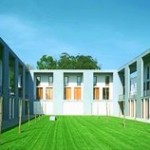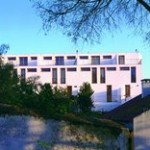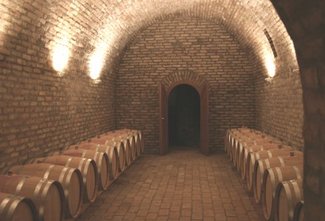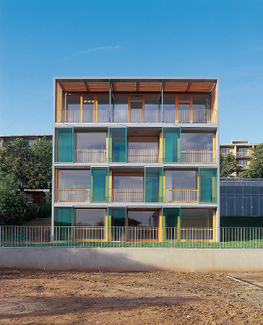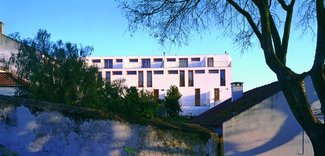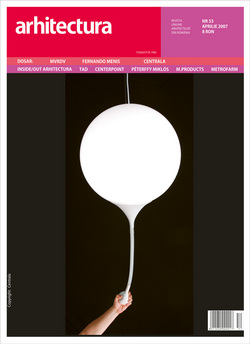- editorial: building site / constantin goagea
- dossier: promontorio arquitectos
: mora river aquarium
: town & country raumplan
: residential buildings, telheiras – lisbon. the rules of the game / kenneth frampton
zeppelin magazine | no #53
To design a vineyard in a traditional, famous vine area, enjoying valuable vernacular architecture, poses three essential problems for architects: to insert the new building within the traditional architecture of the area, to seek new ways of expression of modern, industrial technology of producing wine, or to start from scratch, from the mythical, sacred connotations of wine. A well-documented inquiry will bring valuable international examples to light.
The idea of Konyari Vineyard is quite simple, and consists in the pursuit of ideal relationship to landscape.
A separate complex of three mansions located in Brno’s exclusive residential area. The location of the complex on the southwest slope with an attractive view of forest and the Brno trade fair grounds made it imperative to orientate and open up the mansions as much as possible in this direction. The mansions stand on a steep slope, with two storeys facing the street on the north side and four storeys on the south side; on the northeast of the buildings there are underground garages. The roof of the garages on the boundary between the premises and the pavement of a neighbouring street forms the entrance area with a green belt, a car park for visitors and a dustbin porch. The entrance is designed in order to be parallel on the east with the public pavement.
PROMONTORIO was founded in Lisbon, in 1988, by Joao Perloiro (Lisbon TU, 87), Joao Luis Ferreira (Lisbon TU, 88), Paulo Perloiro (Lisbon TU, 88), Paulo Martins Barata (Lisbon TU, 88, and Ph.D ETH Zurich, 00) and Pedro Appleton (Lisbon TU, 93), shortly after graduation, having recently opened an office in Madrid with Adrian Beloso-Baker as partner. Underlying its approach to the urban form, the work of PROMONTORIO has often been identified with the pursuit of a system of robustness (solidity, stability and durability) both in terms of representational meaning and technical research.
The building sites have been mushrooming everywhere in Bucharest. You can neither escape such energy, nor ignore it. On Eminescu or Dacia Streets, here, at a stone’s throw from our office, everywhere, people are building, renovating, restoring, and arranging things. The city smells as if it tried to regain its life and identity. So, I think it’s easier for everybody to ignore, to be more tolerant, and forget Ceausescu “who built so much and these guys are unable to paint what he did.” You tend to miss how they put up new henhouse-like blocks or raise up transparent, outdated office buildings skywards, and at a blink of an eye old heritage buildings are erased, not to mention the modern heritage about which only a few know about.

